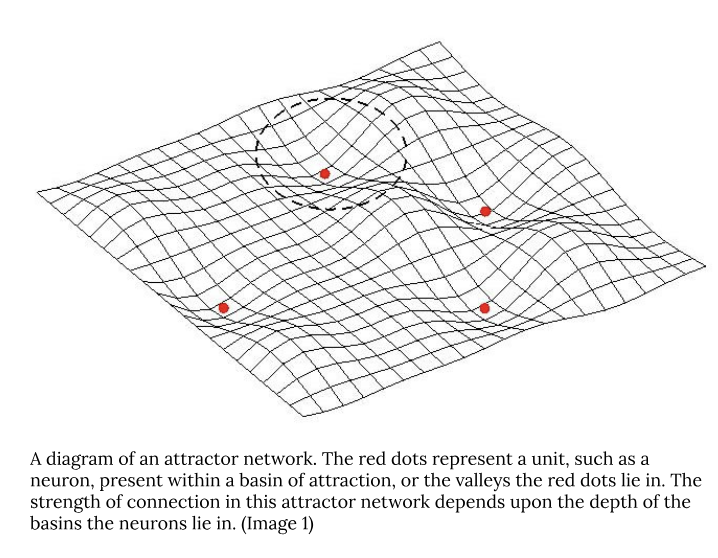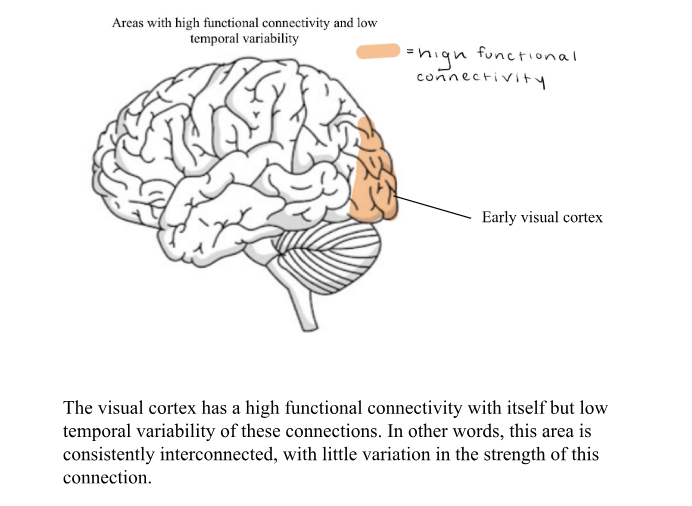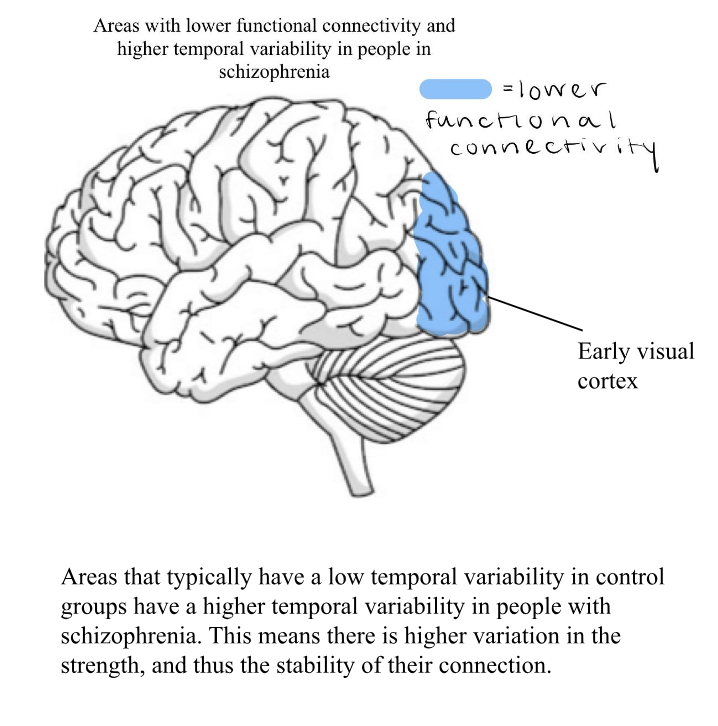Reference: Rolls, E.T., Cheng, W. & Feng, J. (2021). Brain dynamics: the temporal variability of connectivity, and differences in schizophrenia and ADHD. Translational Psychiatry 11, 70.
We have all been here: lost in a rabbit hole of Buzzfeed quizzes and personality tests that can somehow unveil your deepest, darkest fears from nothing more than a “pick your favorite Disney movie” question. Although we know these probability-generated classifications are arbitrary and inaccurate, we cannot help but become obsessed with classifying the unclassifiable: human personality.
Issues with these generalized classifications exist not only in the virtual world but also pose a constant challenge in the face of diagnosing mental disorders. The Diagnostic Statistical Manual (DSM), the primary method psychology professionals use for classifying and diagnosing patients with mental disorders, is a culmination of hundreds of years worth of perceptions about human mental function and dysfunction.
Are these DSM diagnoses and personality questionnaires simply products of our brain’s propensity to label anything “out of the ordinary,” or do these labels exist beyond our perceptions? According to a recent study by researchers at Fudan University in Shanghai, these differences in mental functioning might be based on our brain’s communication—or lack thereof—with parts of itself.
The analysis in this study was conducted using four datasets from the Human Connectome Project. The Human Connectome Project (HCP) is a large-scale project that attempts to build a connectome – a map of the connections within the brain that shows how different regions are connected in function (3). Using this data, researchers analyzed the temporal variability of functional connectivity between brain regions and investigated how these processes are different among people with schizophrenia and ADHD when compared to neurotypical controls.
What is temporal variability of functional connectivity?
Imagine you are on the phone with a friend. You are catching up about your day and decide to meet for dinner later that evening. As she is telling you the name of the restaurant, she drives into a tunnel, and her phone line cuts out. The two phones in this scenario represent two spatially distant regions of your brain. Like with the phone call, these two brain regions establish a functional connection because their activity is consistently coordinated in response to a physiological signal. In other words, even though you cannot see your friend talking to you, you can safely assume you are talking to them because you are engaged in a coordinated conversation. However, similar to your friend’s phone line cutting when she drives through a tunnel, there can be variation in this connection between regions of the brain. This variation in connection, known as temporal variation, coupled with the assumed or functional connection between two brain regions, is known as the temporal variability of functional connectivity.
This idea of differing levels of connection between brain regions is the basis for explaining behavior in those with mental health disorders, specifically schizophrenia and ADHD.
How are these differences in connections recorded?
Differences in connections between brain regions are recorded through attractor networks. In simple terms, an attractor network is a network of nodes, or distinct neural elements such as neurons, that are often recurrently connected within a system. Differences in these “recurrent connections” depend on the amount of excitatory connections within these attractor networks. Excitatory connections are “those that prompt one neuron to share information with the next” (4). If excitatory connections are high, this promotes large “basins of attraction” where overall energy is low. To understand, think of these networks of nodes, or neurons, as magnets. The stronger the two magnets, the stronger their magnetic field, and the more likely they are to draw to each other and continuously stick together. In contrast, the weaker the magnet, the weaker the magnetic field, and the less likely these magnets will draw to each other and continuously stick together. Essentially, these “magnetic fields” are like basins of attraction between neurons. The strength of the “magnetic field”, or depth of the basin of attraction, is dependent upon the amount of excitatory connections neurons have within an attractor network.

For instance, if excitatory connections between neurons within an attractor network are high, the resulting basins of attraction of these neurons will have more depth. This means the neurons are less likely to change their firing rates, or connection when moving from one “basin” to the next. However, when the basin of attraction has little depth, there is less preventing these neurons from having variations in these firings between basins, or temporal variations of their functional connection.
How do these attractor networks influence the dynamics of our brains?
Similar to how the stability of firing rates in attractor networks are influenced by the depth of their basin of attraction, The research conducted at Fudan University came to a similar conclusion. These attractor network dynamics not only exist at the level of neurons, but between brain regions as well. In typical brain dynamics, “low temporal variability of the functional connectivity of cortical areas is related to high mean functional connectivity between those areas” (1).
As seen in the figures below, temporal variability of functional connectivity of different brain regions is low among early visual cortices, but they have a high functional connectivity with each other. Temporal variability of functional connectivity is high in brain regions such as the amygdala and hippocampus, but they have low functional connectivity with each other. Interestingly, the brain dynamics of those with schizophrenia and ADHD showed a different pattern.


The temporal variability of functional connectivity in people with Schizophrenia
Researchers analyzed data from 123 people with schizophrenia and 136 people without it. Temporal variability of functional connectivity in early visual cortical areas, both between themselves and other brain regions (e.g., areas of the temporal lobe) was higher in people with schizophrenia than in people without schizophrenia. The higher variation in connectivity for people with schizophrenia means that the stability of the functional connection is lower.
For a brain region like the early visual areas, stable functional connectivity between regions is necessary for integrating sensory information. When these regions are inconsistently functionally connected, a tendency towards sensory dysregulation, a hallmark of schizophrenia, arises. In more serious cases, sensory dysregulation can lead to a phenomenon known as depersonalization, a feeling commonly described as being mentally detached from yourself, as if you are an outsider looking inside your own body.

The temporal variability of functional connectivity in people with ADHD
Researchers also analyzed data from 92 children with ADHD and 142 people without it. Higher-than-average functional connectivity was found in early visual cortical areas for people with ADHD compared to people without ADHD.
Higher-than-average functional connectivity can lead to a stronger-than-average influence of visual stimuli on perceptions of our environment. This difference in visual processing can hinder the ability to focus on continuous performance tasks, or tasks that require sustained attention, as these tasks are more easily impaired when a strong visual input is present. In diagnostic terms, this is known as a person with ADHD’s tendency to have an attention deficit on tasks that are not consistently visually stimulating.

Why is all of this important?
Any attempt to explain differences in human perception, worldviews, and personalities manifests as just another form of our subjective perceptions of another. The obsession for fitting human personality—an inherently spectral concept—into boxes denotes that there is an irrefutable difference between the way our brains work. This study adeptly demonstrates that these differences exist not only within our observation but at the level of the function of our brain as well.
Images
- Attractor Network by Chris Eliasmith | Accessed 11.16.2023
- Brain images were from FreePik and modified by Author | Accessed 1.30.2023
Additional References
- Rolls, E.T., Cheng, W. & Feng, J. (2021). Brain dynamics: the temporal variability of connectivity, and differences in schizophrenia and ADHD. Translational Psychiatry 11, 70.
- Sæbø, S. (2016, March 20). A Mathematical View on Personality. Metacognition. https://blogg.nmbu.no/solvesabo/2016/03/a-mathematical-view-on-personality/
- U.S. Department of Health and Human Services. (2023, June 23). Connectome programs. National Institutes of Health. https://neuroscienceblueprint.nih.gov/human-connectome/connectome-programs#:~:text=Launched%20in%202009%20as%20a,connectivity%20of%20the%20human%20brain.
- Ippolito, K. (2020, July 14). Balancing act in the brain: Excitatory and inhibitory activity. Balancing Act in the Brain: Excitatory and Inhibitory Activity – Max Planck Florida Institute for Neuroscience. https://mpfi.org/balancing-act-in-the-brain-excitatory-and-inhibitory-activity/#:~:text=Neurons%20communicate%20through%20electrical%20currents,a%20transfer%20will%20take%20place.
